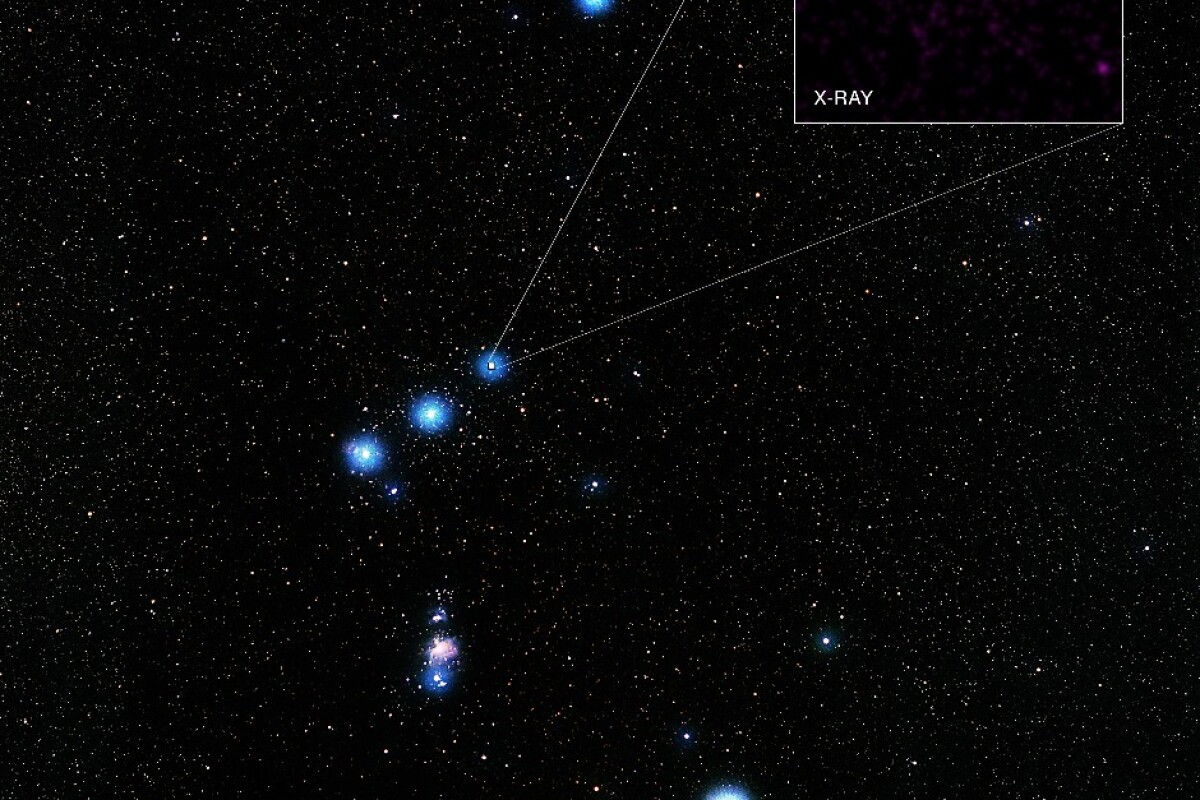Astronomers have used the NASA Chandra X-ray telescope to observe a complex three-star system that forms part of the "belt" of the Orion constellation. The new data tells us a lot about a system located in one of the best-known constellations in the night sky.
When people talk about the Orion constellation, most of the focus is usually stolen by the red supergiant star Betelgeuse, which is shedding mass at a phenomenal rate. This leads astronomers to estimate that the massive star will go supernova in the very near future, at least in astronomical terms.
However, Betelgeuse is not the only (forgive the pun) star in the Orion constellation.Astronomers have also been observing a fascinating stellar system, known as Delta Orion is (Delta Ori), which can be glimpsed with the naked eye as the bright dot that makes up the westernmost point in Orion's belt.
Whilst Delta Ori may appear to be a single star, it is in reality a stellar group comprised of three components, one of which – Delta Ori A – is made up of three stars, with two of the stellar giants forming what is known as an eclipsing binary system.
This means that thanks to a lucky cosmic coincidence, the stars are lined up to Earth in such a way that their orbits cause them to pass in front of each other once every 5.7 Earth-days.

The primary star, known as Delta Ori Aa, plays the greatest role in sculpting the surrounding environment, emitting powerful solar winds from a stellar body that weighs 25 times the mass of our own Sun. This leviathan is closely orbited by a smaller star less than half of the primary body's mass.
Recent observations of the star system where carried out by NASA's Chandra telescope, equated to close to six days of observation. The observations focused on the stellar winds emitted from Deltra Ori Aa, with the astronomers combining information gathered from optical views of the object with the new X-ray data.
The observations detailed Delta Ori Aa's companion star blocking Chandra's view of various parts of the stellar wind, letting them more clearly observe the surrounding X-ray-emitting gas. In so doing, the team was able to uncover new information about the target object.
It was determined that the vast majority of the observed X-ray emissions are caused by collisions between the winds created by the two stars, or by the wind of the first star colliding with the surface of the second. These different kinds of collisions cause changes in to the X-ray emissions of the atoms in the wind of Delta Ori Aa, as observed by Chandra.
Overall, the observations significantly improve our understanding of a lesser known, but ultimately fascinating, component of one of the best known constellations in the night sky.
The researchers published the findings of their research in the Astrophysical Journal.
Source: NASA





